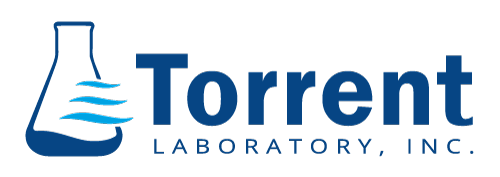
What are Some Stormwater Best Management Practices? Learn more!
1. What is stormwater management?
With the effects of global warming leading to the increased intensity of storms across the globe, there are growing concerns about how we can protect our land, communities, waterways and oceans from excessive runoff, flooding, erosion and pollution. Stormwater runoff is simply the water from rain, snow and ice melt that does not get absorbed into the ground but flows into our creeks, rivers and oceans. These stormwaters carry with them soil, trash, oils, pesticides, and a host of other pollutants.
It is only by thoroughly following stormwater best management practices (BMPs) that we have, and will continue to, become better able to contain flooding, mitigate erosion and keep pollution from entering our waterways and water sources.
2. Four stormwater best management practices
Dry detention basin
Dry detention basins or dry ponds, are a BMP used to control water quantity by holding stormwater for a short period of time. They work by retaining water during and in the hours after storm events. Runoff stormwater collects in the basin and is released slowly back into the storm sewers and streams. While being retained for up to a day, debris and pollutants are allowed to settle to the basin bottom, improving water quality.
These dry detention basins are designed so that when water levels reach capacity, an outlet pushes water out into nearby streams or storm sewer systems. These ponds must be carefully designed and frequently maintained in order to eliminate erosion risks. They work very well at controlling flooding, but require frequent cleaning and maintenance as well as an allotment of land during development.
Vegetated swales
These are shallow, open channels designed to slow down stormwater runoff and hold stormwater long enough to remove pollutants. These swales are planted to become lush with vegetation along the sides and bottom. The bushes and grasses in the swales serve not only to slow the flow of water but also to absorb and mitigate pollutants.
They work very well in both industrial and residential areas where this kind of vegetation grows well and where the swales themselves don’t allow for continuous standing water.
Retention basins
These retention basins are basically artificial lakes that collect stormwater runoff, hold it and promote the same water treatment actions of a natural lake or pond. These natural treatment processes include:
- Natural sedimentation that removes metals, particulates, and organic matter.
- Biological removal of pollutants through plant, algae and bacterial uptake.
These retention ponds usually maintain a certain water level allowing for release only following big storm events. They work well almost anywhere that has enough land to support them and they work best where the soil is porous enough to allow for water to pass through rather quickly.
Retention basins are one of the very best options for stormwater runoff management because they are long lasting, they are excellent at improving overall water quality, they replenish groundwater sources all while improving the overall appearance of parks and communities in which they are built.
Coverings
Coverings may seem like a strange stormwater runoff management BMP. But the reality is that there are a lot of facilities that store raw materials, byproducts, and even final products outside that, when rained upon, can allow pollutants to get into stormwater runoff. These coverings can be temporary tarps or more permanent roofed structures. This makes them easy to procure, flexible, effective and very cost efficient.
3. Select the right stormwater runoff management strategies
Selecting the best stormwater runoff management strategy or strategies for your business, construction project or development plan is not only a legal obligation, but a vital and necessary contribution to the future health of our land and water resources. Stewardship of our limited resources are essential as we all seek to deal with changes in climate, weather patterns, growing populations, human health and the long term health and sustainability of our environments.
What stormwater management requirements are there in your municipality and state? What stormwater management strategies are best suited to meet these requirements for your project or for your facility? There is not one surefire solution, but there are plenty of things to consider when determining your stormwater best management practices. These include:
- What are the pollutants you must remove and or mitigate from your property/facility?
- What are the climate and weather conditions in your area?
- How much land is available that is suitable for construction?
- What are the other factors such as topography, soil type, and proximity to other water sources or drainage areas that you must work with?
- What kind of maintenance will be required for effective operation of your BMPs?
- What will be the aesthetic impact of your BMPs on the property and/or community?
- How will your BMPs affect the surrounding environment (e.g., water quality, fish & wildlife, insect control, odor, etc.)?
As you can see there is much to consider in your selection process. It is important that you get the very best advice and support from experts in the field as you determine your best management practices.
4. Conclusion
Finding allies and supporters in the journey to meeting your stormwater runoff management needs should be an essential part of your strategy and process. You will need to work closely with regulatory authorities to meet requirements and you will need to know what your baseline stormwater runoff pollutant situation is. An experienced and expert Environmental Testing Laboratory with a long track record of quality customer service, fast turnaround times and state of the art equipment will help you establish your baseline and work with you to meet and exceed all requirements.
Torrent Laboratory has just that kind of superior reputation for combining the highest quality testing and timely results with the best customer service in the industry. Torrent Laboratory is your partner for stormwater testing, stormwater runoff analysis, remediation and stormwater monitoring plans. We are proud to work in partnership with regulatory boards, industries, developers and communities to meet and exceed all regulatory requirements in order to benefit and enhance the health and future of all of us.






